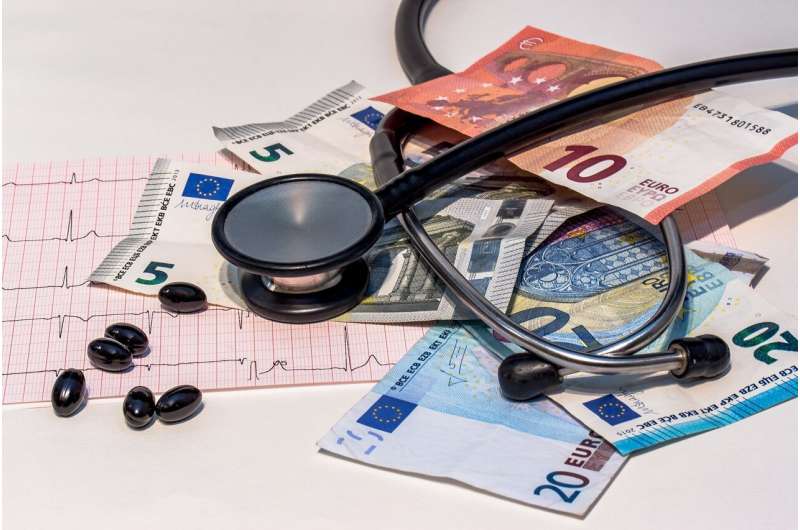Government health spending sees 1.8% increase at the start of the pandemic

Spending on health goods and services grew by 1.8 percent to $202.5 billion during the 2019–20 financial year, which included the first months of the COVID-19 pandemic in Australia, according to a new report by the Australian Institute of Health and Welfare (AIHW).
The report, Health Expenditure Australia 2019–20, shows that government health spending increased but there was a decline in non-government spending—including the amount individuals spent on their own health care.
"Increases in government health spending were largely driven by programs targeted toward ensuring resilience in the health system against the COVID-19 pandemic and came despite the pandemic having a dampening effect on many areas of activity within the health system—such as elective surgery—and as a result of lockdowns," said AIHW spokesperson Dr. Adrian Webster.
"This reduction in some usual activities within the health system during the pandemic correlated with non-government health spending declining. After adjusting for inflation, total health spending grew by 1.8 percent from 2018–19, which was lower than the average yearly growth rate over the decade (3.4 percent)."
More than two-thirds (70.4 percent) of health spending was by federal, state and territory governments. Australian Government spending was $86.4 billion, representing a $4.6 billion real increase (5.6 percent) from 2018–19. This was higher than the average real growth in the decade to 2019–20 (3.2 percent).
State and territory governments spent $56.2 billion on health. This was an increase of 4.0 percent ($2.2 billion) from 2018–19 in real terms, above the average for the decade of 3.5 percent.
Health spending by non-government entities (including individuals, private health insurance providers, injury compensation insurers and other private sources) declined by 5.2 percent between 2018–19 and 2019-20 to $59.9 billion. Spending by individuals fell by 7.6 percent to $29.8 billion, with average per person individual health spending dropping by $117 to $1,165. Spending by private health insurance providers fell by 5.3 percent ($0.9 billion) in real terms to $16.7 billion.
Total health spending (from all sources) in 2019–20 equated to an average of $7,926 per person. In real terms, this was $18 (0.2 percent) more per person than in 2018–19.
Health spending represented around 10.2 percent of Gross Domestic Product (GDP) in 2019–20—0.2 percentage points higher than in 2018–19, largely due to slower growth in economic activity coinciding with the pandemic.
"Spending on hospitals grew by $2.3 billion in real terms to $83.5 billion, making up 41.2 percent of total health spending," Dr. Webster said.
"Spending on primary health care increased by $0.4 billion to $66.9 billion, with $13.3 billion going to unreferred (mainly general practice) medical services—including $1.1 billion for Medicare Benefits Schedule telehealth services. Primary health care spending also included $12.9 billion for subsidized pharmaceuticals and $11.9 billion on other medications."
More information: Health Expenditure Australia 2019–20: www.aihw.gov.au/reports/health … 19-20/contents/about





















